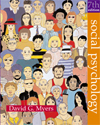 |
1 |  | 
In U.S. district courts, how many cases do not come to trial? |
|  | A) | 4 out of 5 |
|  | B) | 1 out of 2 |
|  | C) | 2 out of 3 |
|  | D) | 9 out of 10 |
 |
 |
2 |  | 
According to the text, eyewitness testimony is |
|  | A) | believed most of the time. |
|  | B) | easily discredited. |
|  | C) | only believed when the conditions are good. |
|  | D) | believed when eyewitness' memory for trivial details is poor. |
 |
 |
3 |  | 
In a study at California State University-Hayward, 141 students witnessed an assault on a professor. Seven weeks later, what percentage of students identified an innocent person as the assailant from a group of six photographs? |
|  | A) | 60 |
|  | B) | 28 |
|  | C) | 42 |
|  | D) | 72 |
 |
 |
4 |  | 
Remembering wrong information is called the |
|  | A) | misinformation effect. |
|  | B) | wrong information effect. |
|  | C) | propaganda effect. |
|  | D) | variable memory effect. |
 |
 |
5 |  | 
Which of the following does not boost an eyewitness' confidence? |
|  | A) | getting no feedback from the lineup interviewer |
|  | B) | learning that another witness had fingered the same person |
|  | C) | being asked the same question repeatedly |
|  | D) | preparing for cross-examination |
 |
 |
6 |  | 
To minimize false lineup identifications, which of the following is not true? |
|  | A) | If all suspects are male, have every suspect wear a tie. |
|  | B) | Give eyewitnesses a lineup with no suspects to screen out those who make false identifications. |
|  | C) | Have witnesses make yes or no judgments to a sequence of people. |
|  | D) | Include instructions that the suspect might not be in the lineup. |
 |
 |
7 |  | 
Which of the following is not true about eyewitness testimony? |
|  | A) | Confidence is a good predictor of accuracy. |
|  | B) | A person's memory of an event may be affected by his attitude. |
|  | C) | Testimony about an event often reflects information obtained after the event. |
|  | D) | Instructions can affect an eyewitness's willingness to make an identification. |
 |
 |
8 |  | 
In one study of 3,500 criminal and 4,000 civil cases, how many times did the judge agree with the jury? |
|  | A) | 4 out of 5 |
|  | B) | 7 out of 8 |
|  | C) | 3 out of 5 |
|  | D) | 9 out of 10 |
 |
 |
9 |  | 
Mock juries are less sympathetic to a defendant who is |
|  | A) | less educated. |
|  | B) | the same race. |
|  | C) | shares their attitudes. |
|  | D) | the same gender. |
 |
 |
10 |  | 
The desire to assert one's sense of freedom is called |
|  | A) | reactance. |
|  | B) | the liberation effect. |
|  | C) | the liberty effect. |
|  | D) | independence. |
 |
 |
11 |  | 
In one Nevada study of videotaped criminal instructions, what percent of the material could the participants answer correctly? |
|  | A) | 15 |
|  | B) | 21 |
|  | C) | 39 |
|  | D) | 59 |
 |
 |
12 |  | 
Research shows that __________ juries ultimately reach the verdict favored by the majority on the first ballot. |
|  | A) | 9 out of 10 |
|  | B) | 7 out of 8 |
|  | C) | 5 out of 9 |
|  | D) | 7 out of 10 |
 |
 |
13 |  | 
A criticism of a six-member jury is that it is |
|  | A) | less likely to represent a community's diversity. |
|  | B) | more likely to have hung verdicts. |
|  | C) | easily dominated by one individual. |
|  | D) | less likely to take the task seriously. |
 |



 2002 McGraw-Hill Higher Education
2002 McGraw-Hill Higher Education

 2002 McGraw-Hill Higher Education
2002 McGraw-Hill Higher Education